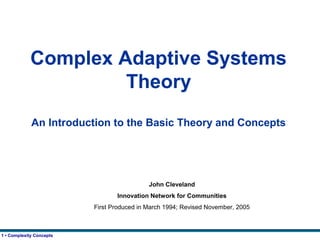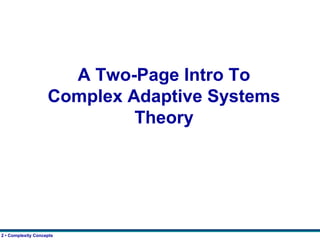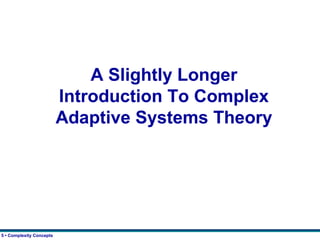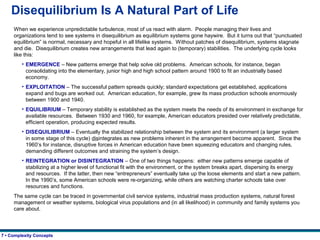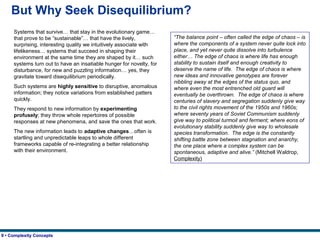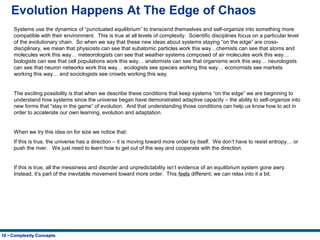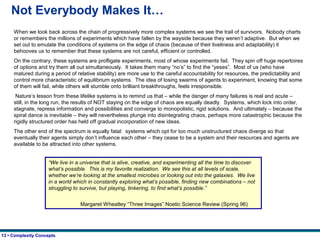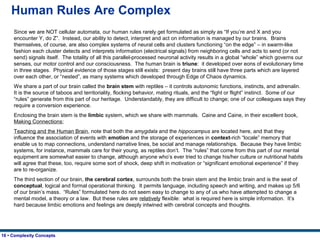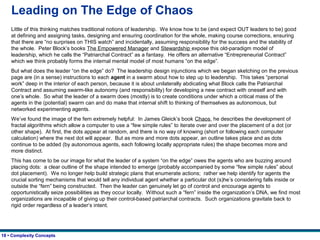This document provides an introduction to complex adaptive systems theory. It explains that complex adaptive systems exist on the "edge of chaos," with enough stability to sustain themselves but also enough creativity for change and adaptation. Systems on this edge experience periods of order and disorder, with new patterns emerging during times of disequilibrium that allow for reintegration at a higher level of organization. The edge of chaos provides systems with the ability to learn, evolve, and adapt in response to changes in their environment.
